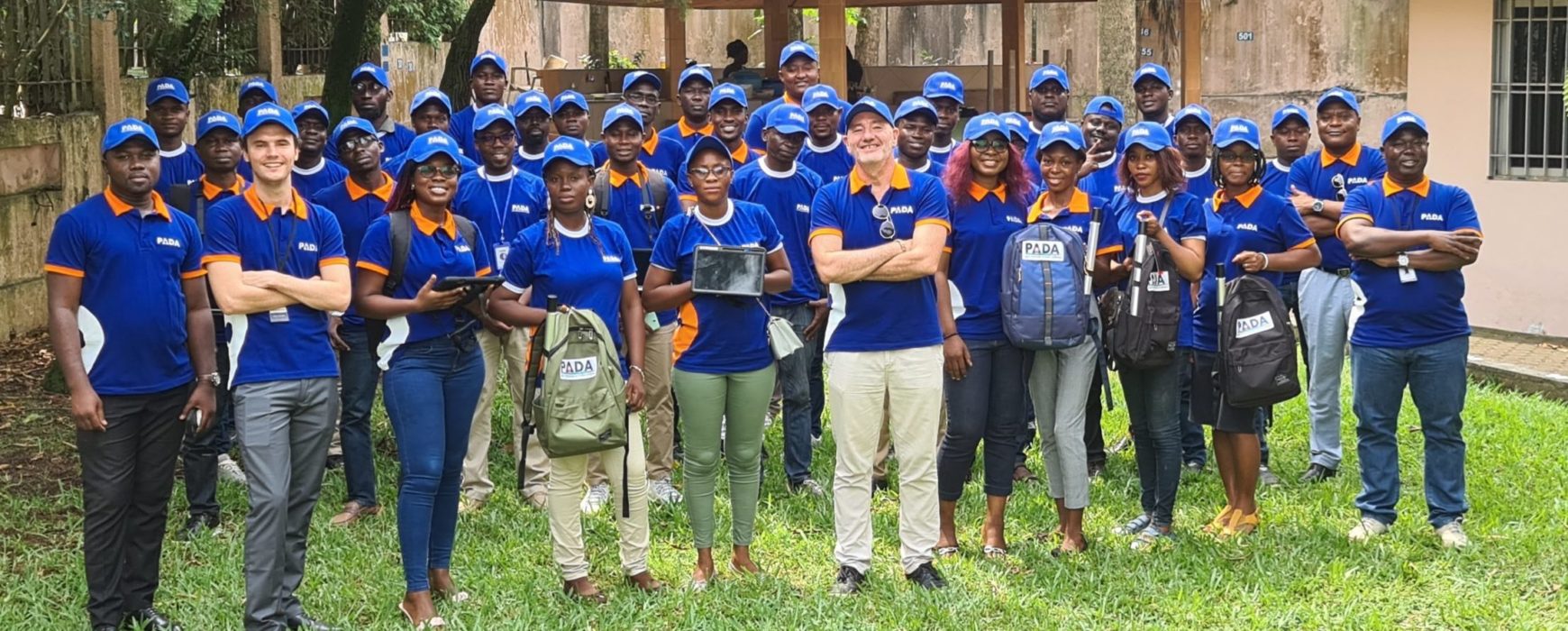The Abidjan District Address System Project (PADA) kicked off last July, and operations in a test zone in August allowed the methodology to be tried out in 5 neighbourhoods. The field surveys carried out by the appraisal teams since then have been using a methodology that enables accuracy to within 10 cm in differential real time. This result is being achieved thanks to the equipment the teams are using, and in particular a dual frequency GPS rod developed by IGN specifically for these operations.
Control of points and the calculation of address numbers (metric numbering) take place in the workshop before beginning stencilling operations (numbers are painted on to the facades). This work will be complemented by image and LiDAR MMS (Mobile Mapping System) readings for all useable streets.
These readings will be used to control points and also for automatic recognition of doors on the images, which means that doors giving on to the street will automatically be associated with the main address corresponding to the number of the principal entrance of the building.
This is how the PADA operators, more than 200 of them who are trained, equipped and motivated, will be spending 3 years criss-crossing Abidjan’s 13 communes and 12,000 streets, in order to record the co-ordinates and mark the address numbers of several hundred thousand buildings.

